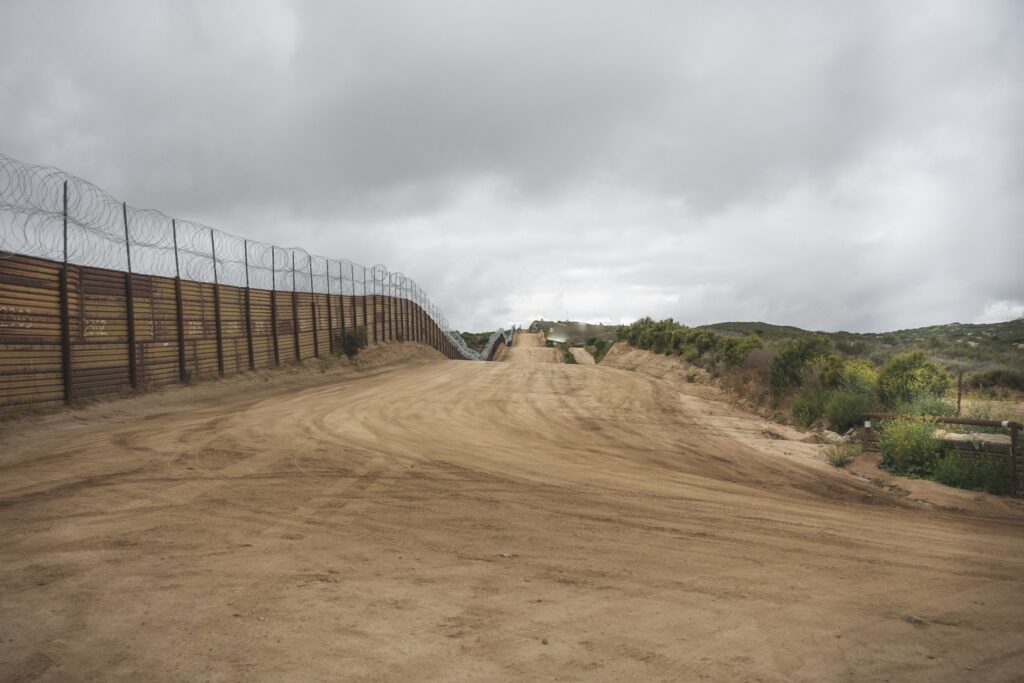Pacific Crest Trail Length, Hiking Time, and Amazing FKTs

In this post, I’ll provide an overview of the Pacific Crest Trail’s (PCT) length, discuss how long it takes for most people to hike, and then finish off by talking about the amazing achievements of those hikers and runners that have set speed records on the trail, also known as the Fastest Known Times.
The PCT is one of the two original National Scenic Trails in the United States created by Congress in 1968 with the National Trails System Act. It was established “In order to provide for the ever-increasing outdoor recreation needs of an expanding population and in order to promote the preservation of, public access to, travel within, and enjoyment and appreciation of the open-air, outdoor areas and historic resources of the Nation”.
Pacific Crest Trail Length
The exact length of the trail has changed over the years as it’s been rerouted due to maintenance or new land acquisition by the Pacific Crest Trail Association. But at the time of writing, it’s measured it to be 2653 miles (4270 km) by the Guthook app, which is ubiquitous for navigation among thruhikers.
The southern terminus of the trail is in Campo, California, a small unincorporated town of about 2,700 people on the Mexican border. The northern terminus is in a forest in the middle of nowhere at the Canadian Border, with Washington’s Pasayten Wilderness on one side, and British Columbia’s E.C. Manning Provincial Park on the other.
When northbound hikers reach the northern terminus of the PCT, most will continue walking north 8 miles into Canada to reach Highway 3 and make their way back into civilization. However, some others will turn around and hike 30 miles south to the nearest road in the US at Hart’s Pass. Both of these options can feel like an eternity after hiking the previous 2653 miles.
How Long Does it Take to Hike the Pacific Crest Trail?
One of the best sources of historical data on PCT hikes over the years is the Halfway Anywhere website. Mac, the blogger behind that site, conducts an online survey of thruhikers at the end of every season. And while it isn’t a scientifically administered or validated survey, it’s the best data we have and can give us a decent idea of what’s going on out there.
Based on the last four years of data, hiking the PCT takes an average of 149 days.
The survey data splits up PCT thruhikers based on whether they went northbound (NOBO) or southbound (SOBO). That’s because southbound hikers need to wait until the snow in the North Cascades is mostly gone before hitting the trail, resulting in a relatively short weather window and fewer days spent on trail overall.
Let’s have a look at the historical data on thruhike completion time:
| Year | NOBO Average Hiking Days | SOBO Average Hiking Days | NOBO/SOBO Average Hiking Days |
|---|---|---|---|
| 2019 | 154 | 129 | 152 |
| 2018 | 152 | 123 | 149 |
| 2017 | 150 | 117 | 148 |
| 2016 | 145 | 115 | 145 |
We can see from the table above that northbound thruhikes have taken an average of about five months over the last four years, while southbounders have gone through in about 4 months but have been getting slower on average each year.
Because the numbers above are only averages, they don’t paint a complete picture of all the thruhikers on the PCT. On the slower end, a northbound hiker that makes full use of the possible weather window could spend as long as seven months on trail. On the other side of the spectrum, every year there are a handful hikers that seek a more intense experience and finish in about three months.

Pacific Crest Trail Fastest Known Times
Walking the PCT from one end to the other is a significant challenge in it’s own right. But some people have taken the challenge to a whole other level by seeking to complete it faster than anyone before them. This is known as setting a Fastest Known Time, or FKT. There’s no official governing body or rules for FKTs, but the community generally accepts the guidelines set on the website fastestknowntime.com administered by Peter Bakwin and Buzz Burrell.
The FKTs on the PCT and all other trails are split into two different styles: supported and self-supported. Supported attempts allow for the hiker to have friends or family meet them on trail to supply them with food and anything else they may need, and help them camp in relative comfort. As a result, supported hikers are actually able to run a instead of walk since they don’t need to carry their camping gear or much food each day.
In contrast, self-supported attempts more closely resemble what other thruhikers are doing out there. Self-supported hikers carry all their own food and camping gear, and resupply at stores or the post office without any help from a designated crew. In addition, most historical self-supported attempts have not used a vehicle in any way, meaning that they sometimes walk off trail several miles at a time in order to resupply in the nearest town.
Fastest Known Time Progression: Supported
David Horton was the first to run the length of the Pacific Crest Trail in a supported running style, and a feature-length documentary by JB Benna about that run is on YouTube. Horton ran the whole trail in 2005 in 66 days, setting a precedent for all future attempts.
In 2013, Josh Garrett bested Horton’s time by running the trail in 59 days. In the following years, several people made attempts at the supported record, with Joe “Stringbean” McConaughy finding success in 2014 with a 53-day run.
Stringbean’s record stood until Belgian dentist Karrel Sabbe set a new FKT in 2016 of 52 days. Karrel’s record stands at the time of this blog post.
| Name | Time | Year |
|---|---|---|
| David Horton | 66d 7h 16m | 2005 |
| Josh Garrett | 59d 8h 14m | 2013 |
| Joe “Stringbean” McConaughy | 53d 6h 37m | 2014 |
| Karrel Sabbe | 52d 8h 25m | 2016 |
Fastest Known Time Progression: Self-Supported
The oldest mention of a record I could find online was a 79-day hike in 2007 by Joe Kisner. The following year, Kisner teamed up with Williamson to smash his previous best with a 71-day hike.
The very next year in 2009, Williamson and another hiker named Adam bettered the mark even further by completing the PCT self-supported in 65 days. One of the incredible things about that time is that the two of them hiked it even faster that David Horton’s supported record that stood at that time, meaning they were able to beat his run even though they were carrying their own camping gear and buying their own food along the way.
In 2011, Williamson went for his own record, solo this time, and lowered the mark to 64 days.
The existing self-supported record of 60 days was set by Heather “Anish” Anderson in 2013, and she published a very enjoyable book about that hike called Thirst: 2600 Miles to Home. She later went on to set the self-supported FKT on the Appalachian Trail and also become the first woman to hike the Calender Year Triple Crown (hiking all of the Pacific Crest Trail, Appalachian Trail, and Continental Divide trail in a single calendar year).
| Name | Time | Year |
|---|---|---|
| Joe Kisner | 79d 21h 42m | 2007 |
| Joe Kisner and Scott Williamson | 71d 2h 41m | 2008 |
| “Adam” and Scott Williamson | 65d 9h 58m | 2009 |
| Scott Williamson | 64d 11h 19m | 2011 |
| Heather “Anish” Anderson | 60d 17h 12m | 2013 |

